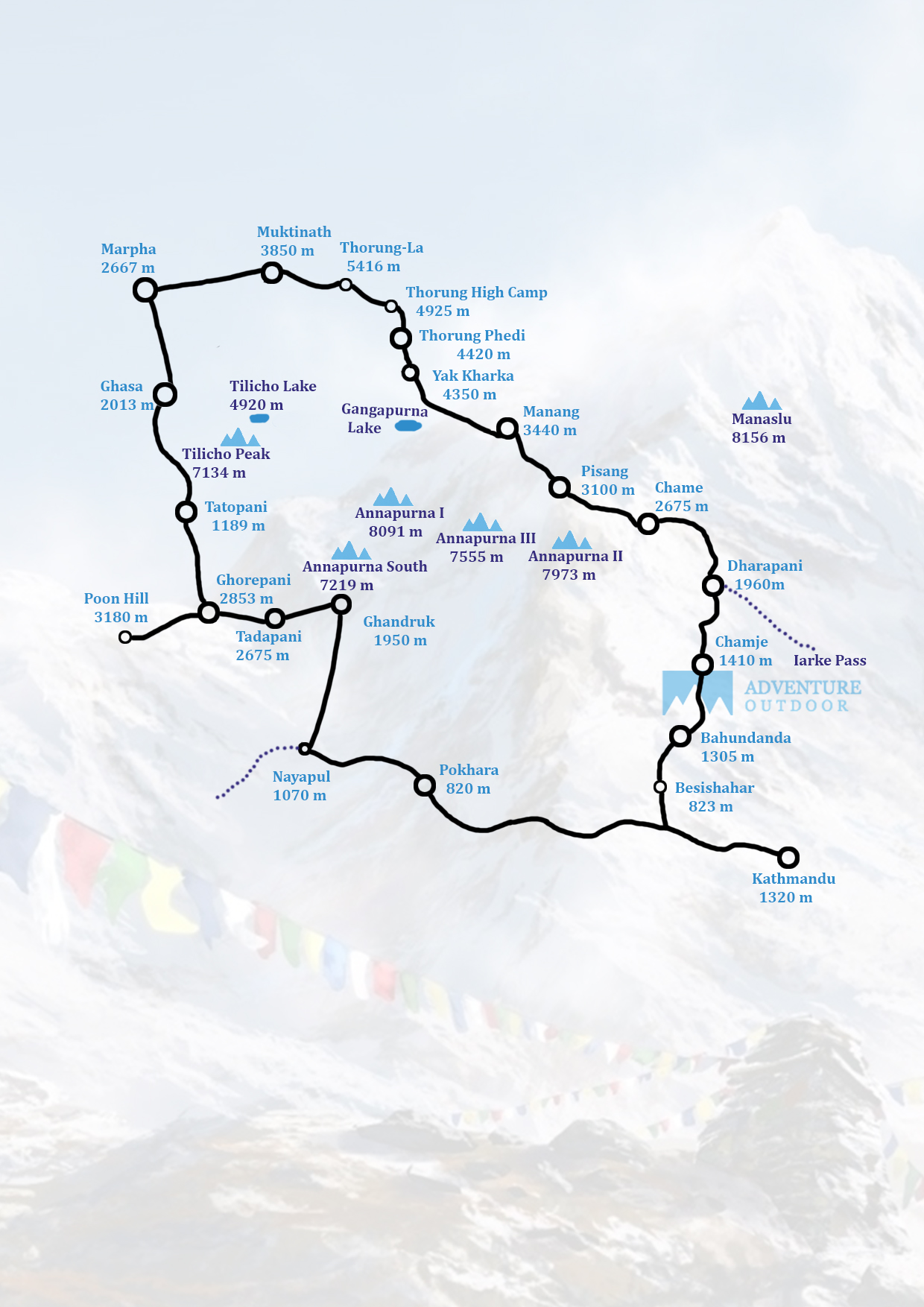Annapurna Circuit Trek: An Immersive Himalayan Adventure
The Annapurna Circuit Trek is one of Nepal's classic trekking routes, taking you through a remarkable diversity of landscapes – from lush green paddy fields and subtropical rainforests to deep valleys, snow-capped slopes, and a semi-arid Tibetan-like terrain. The highlight of the trek is the Thorung La Pass, standing tall at an elevation of 5,416 meters (17,769 feet).
The trek spans across four regions – Lamjung, Manang, Mustang, and Myagdi, offering a captivating blend of cultures and traditions. In the lower regions, you'll experience Hindu influences, while ascending to higher altitudes unveils a rich tapestry of Buddhist cultures, including Sherpa, Tibetan, and the unique Gurung traditions.
Trekking Highlights:
- Diverse landscapes: From verdant valleys to arid deserts
- Crossing the world's deepest gorge, the Kali Gandaki
- Encountering diverse flora and fauna, including 101 mammal species, 478 bird species, 41 reptile species, and 23 land and water animal species
- Exploring the Annapurna Himalayan range's towering peaks
- Immersing in the cultural richness of Hindu and Buddhist traditions
The Annapurna Circuit Trek is a true feast for the senses, offering an unparalleled trekking experience that combines breathtaking natural beauty with a deep dive into the region's diverse cultural heritage.




